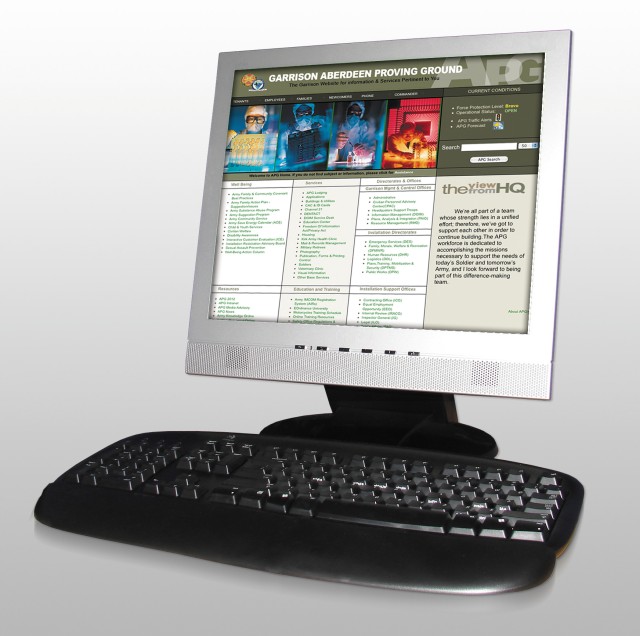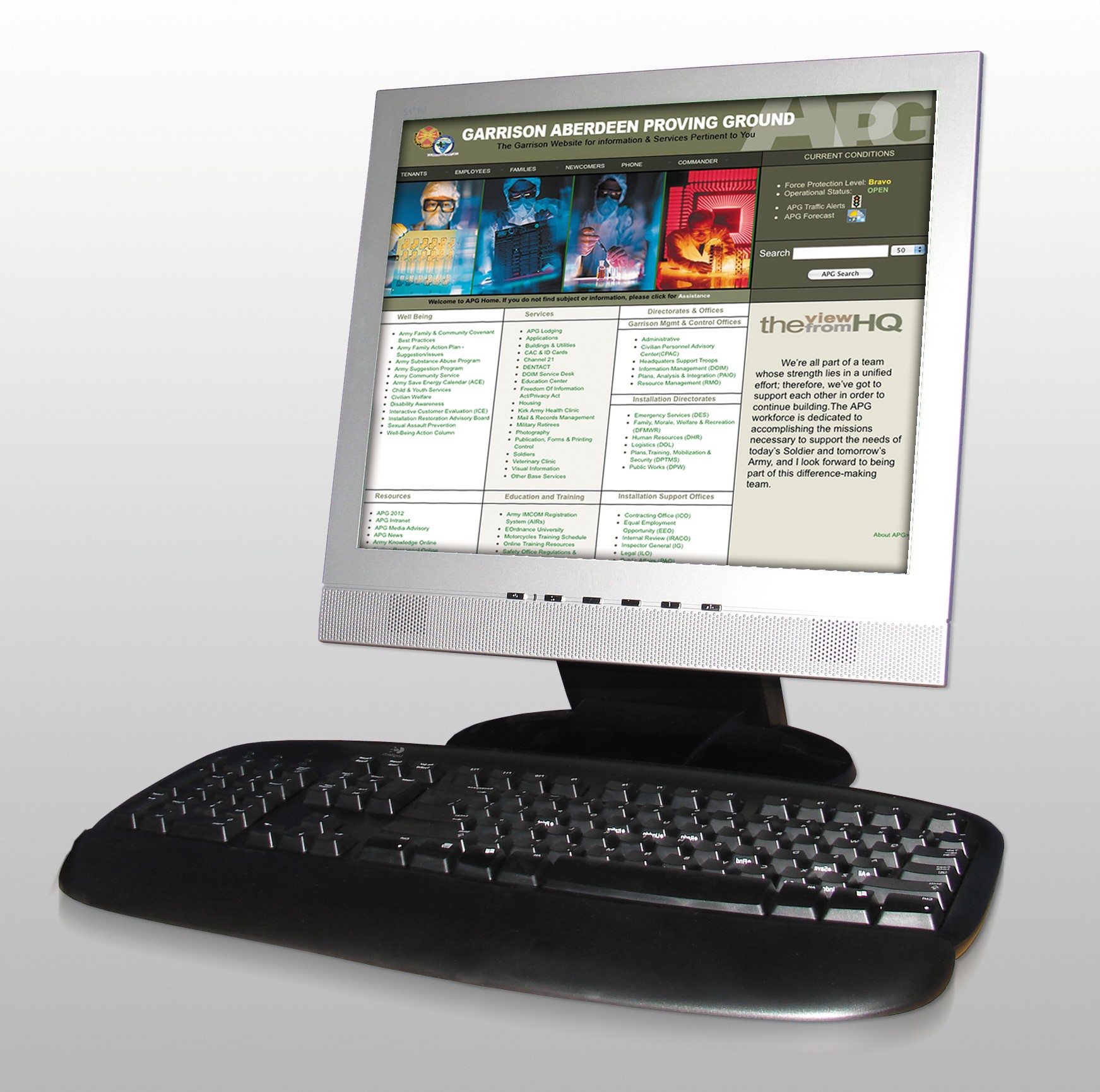The Directorate of Information Management stood up the new Garrison Aberdeen Proving Ground Web site June 5 and with it comes not only a more modern and attractive look but more user-friendly features for information seekers.
Tom Lockard, chief of the DOIM's Desktop Systems Support Branch B, credited APG Garrison Commander Col. Jeffrey S. Weissman with inspiring the upgrades to the site, which took about a year to complete.
"This came about by the garrison commander wanting something to serve our service members, Families, civilians and retirees that was user-friendly, visually appealing and provided more information," Lockard said.
He also credited the role the garrison's Visual Information personnel, Sean Kief and Jim Bridges, played in designing the site.
"All the links and mechanics behind the page are our responsibility but they did a great job with the concepts, layout, graphics and color scheme for the site," he said.
"Hopefully, we've structured that information the right way, and we've been able to accomplish providing information for newcomers, civilians and service members so they can find information right away."
He said the site is still a work in progress and that more changes will be made. Specifically, the "View From HQ" box on the right side of the front page will feature information and video from the garrison headquarters.
Lockard said the original site followed the design of the Installation Management Command, which is largely all text with little or no graphics and photographs.
"IMCOM wasn't keeping up with the times," he said. "We made the bold move, and this is what we came up with."
Besides the appearance, the site's best feature is that more information is accessible from the front page, he said.
"The most significant difference is that information on the front page once was buried layers down - some three to five pages deep. Our main goal was to provide one-click information."
He said the undertaking was a "major process" that involved more than just the page design but everything that goes on in the "background" as well.
"It's a very involved process, first deciding what goes on the page, then figuring out how to make it work and making it compatible with our system. At the same time, we wanted to keep it fresh, crisp and appealing to people. This is a living, breathing representation of GAPG, and we welcome input from users as to how we can make it more useful and meaningful."
Lockard noted that the site is the APG Garrisons' and that his office will be collaborating with the U.S. Army Research, Development and Engineering Command on an installation Web site in the near future.
"The installation Web site will represent the whole installation and the garrison's will be a link from that," he said.
Users can add comments or suggestions to the new garrison Web site by clicking on the ICE icon or on the "Comments" link at the bottom of the front page.
Lockard said that others who worked on the project from the DOIM included Mikey Graziano, Webmaster; Mark Evans, Tim Hogue, Mary Jane Lepowski and Debbie Young.
Formerly part of the DOIM, the Visual Information Services Center now comes under the Garrison's Directorate of Plans, Training, Mobilization and Security. Garrison photographers Kief and Bridges collaborated on the site's design., as well as graphic designer Diane Burrier. Kief said that after first checking to see what other installations were doing with their Web sites, they realized that others were not following the IMCOM standard.
He said his role was building the template, while Bridges worked on the actual appearance and that Bridges came up with the basic design while he built it from that, using PhotoShop to make the graphics. The two worked together on coloration and color schemes, Kief said.
"Then, I took the graphics and built the HTML [Hypertext Markup Language] using Adobe Dreamweaver software," he said.
With full-time missions, they worked on the project whenever they found the time.
"It took a long time," Kief said, "and when we were done we turned it over to [the DOIM]."
He said the focus was to provide the community with something easier to use.
"On the old site, everything was buried so deep - up to five pages. I don't think anything should be more than three pages deep," Kief said.
"We tried to build it in a way that people wouldn't have to do a lot to use it, and I hope we've provided something that's easy to use and that makes sense."


Social Sharing